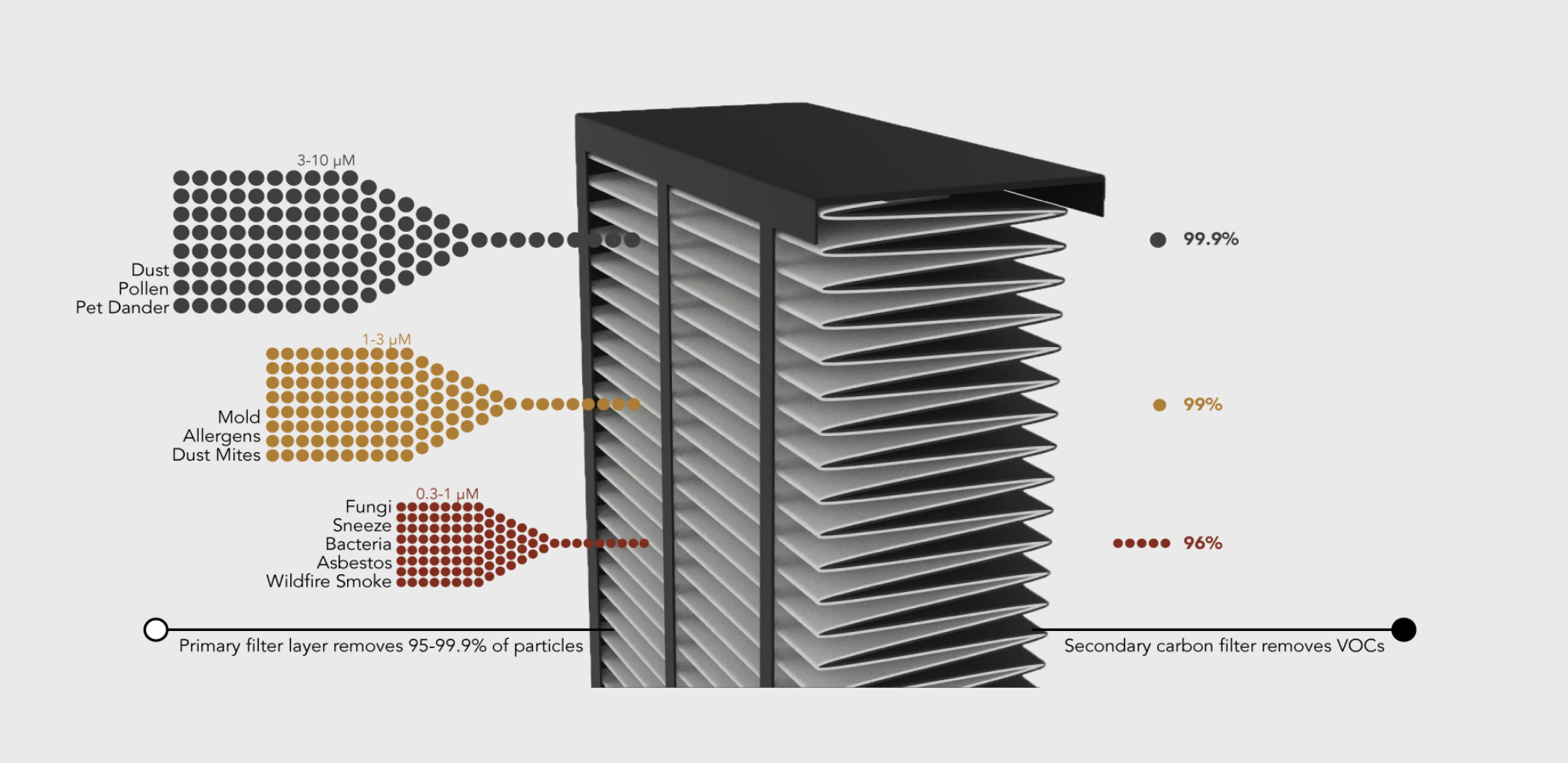Does a Higher MERV Filter Really Strain Your HVAC System?
There’s a persistent belief in HVAC circles—and among homeowners—that using a high-MERV filter will “suffocate” your system. On the surface, that sounds reasonable: finer filtration = more resistance, right?
In fact, you’ll find this claim echoed in several well-known publications. Some product guides from major outlets like the New York Times advise against high-MERV filters, warning they can restrict airflow or harm your furnace. But here’s the problem: these articles rarely mention why that can happen—or the design factors that prevent it.
Without context, homeowners are left thinking that any high-MERV filter is bad, which isn’t true. In many cases, it’s not the filter’s efficiency that causes problems—it’s the mismatch between filter depth, surface area, and the HVAC system’s design.
Let’s unpack how MERV ratings actually work, what really affects airflow resistance, and why a well-designed high-MERV filter can actually reduce system strain rather than increase it.
What the MERV Rating Actually Tells You
MERV stands for Minimum Efficiency Reporting Value. It’s a scale from 1 to 16 that tells you how well a filter captures particles of various sizes.
Lower MERVs (6–8) capture larger particles like dust and lint
Mid-range MERVs (11–13) catch things like pollen, mold spores, and smoke
High MERVs (14–16) can filter out submicron particles—think wildfire smoke, bacteria, and even some viruses
So yes—higher MERV filters are more efficient. But whether or not they “choke your system” depends on something else entirely.
MERV vs Resistance: Not a 1:1 Relationship
This is where most guides (and a few technicians) oversimplify. It’s true that a higher-MERV filter can add more resistance—if you’re comparing filters with the exact same size and structure.
A 1-inch MERV 13 filter will typically have more resistance than a 1-inch MERV 8
But a 5-inch MERV 16 filter with deep pleats and more surface area may have less resistance than both
The key factor here is surface area. Filters with more pleats can move more air through more media, reducing pressure despite the denser mesh.
Analogy: Straw vs Screen Door
Imagine breathing through a straw versus breathing through a screen door.
A dense 1-inch filter = the straw: narrow, restrictive, and quick to clog
A deep, pleated MERV 16 filter = the screen door: large surface, fine filtration, easy airflow
That’s why resistance isn’t just about MERV rating—it’s about filter depth and design.
Submicron Filtration: Where MERV 16 Shines
Higher-MERV filters (especially 16) are particularly good at removing submicron particles—the kind you can’t see, but may impact your health the most:
Wildfire smoke
Lead dust and other fine particulates
Some viruses and bacteria
Pet allergens and VOCs attached to airborne particles
These filters are especially valuable in homes with respiratory issues, or in regions that deal with regular smoke exposure. And when installed in the right type of filter cabinet, they can perform well without hurting system performance.
When the MERV Myth Backfires
Take the case of a homeowner in Almaden, San Jose, California. She wanted better air quality and asked her HVAC tech about upgrading to a MERV 16 filter. The tech advised against it, warning that it would strain her system. Instead, they installed a 1-inch MERV 13 filter.
Over time, that filter turned out to be too restrictive for the system. It clogged quickly, increased static pressure, and caused the furnace to short-cycle. A few years later, the heat exchanger cracked—a costly repair likely tied to overheating and stress from restricted airflow.
Ironically, if she had used a 5-inch MERV 16 filter in a proper housing, the system would have had half the resistance, better airflow, and cleaner indoor air. The high-efficiency filter wasn’t the problem—the shallow frame and poor fit were.
A Better Outcome in Noe Valley, San Francisco
In contrast, a homeowner in Noe Valley, San Francisco, California upgraded to a properly sized 5-inch media cabinet with a MERV 16 filter. They’d been replacing a 1-inch MERV 8 monthly and still had visible dust in the home.
With the deeper filter in place:
The system ran quieter
Filter changes dropped to once or twice a year
Air quality noticeably improved
And there was no measurable strain on the blower motor
The outcome wasn’t just better air—it was better system performance.
Bottom Line
MERV rating ≠ resistance. Surface area plays a major role.
A 5-inch MERV 16 filter often has less resistance than a 1-inch MERV 13.
Many popular articles oversimplify this relationship, unintentionally spreading misinformation.
A well-matched filter and housing can provide both high filtration and healthy airflow.
The real issue isn’t “MERV too high”—it’s when filters are used in frames or systems not designed for them.
If You’re Considering a Filter Upgrade:
Ask your HVAC tech to measure static pressure
Check if your system has (or could support) a deep media cabinet
Don’t assume all high-MERV filters are restrictive—ask about surface area and airflow, not just rating
If you’re in a wildfire-prone area or dealing with allergies, MERV 16 may be the better, safer choice
High-efficiency filters aren’t the villain. They’re just misunderstood. Used correctly, they can protect your air—and your system.


